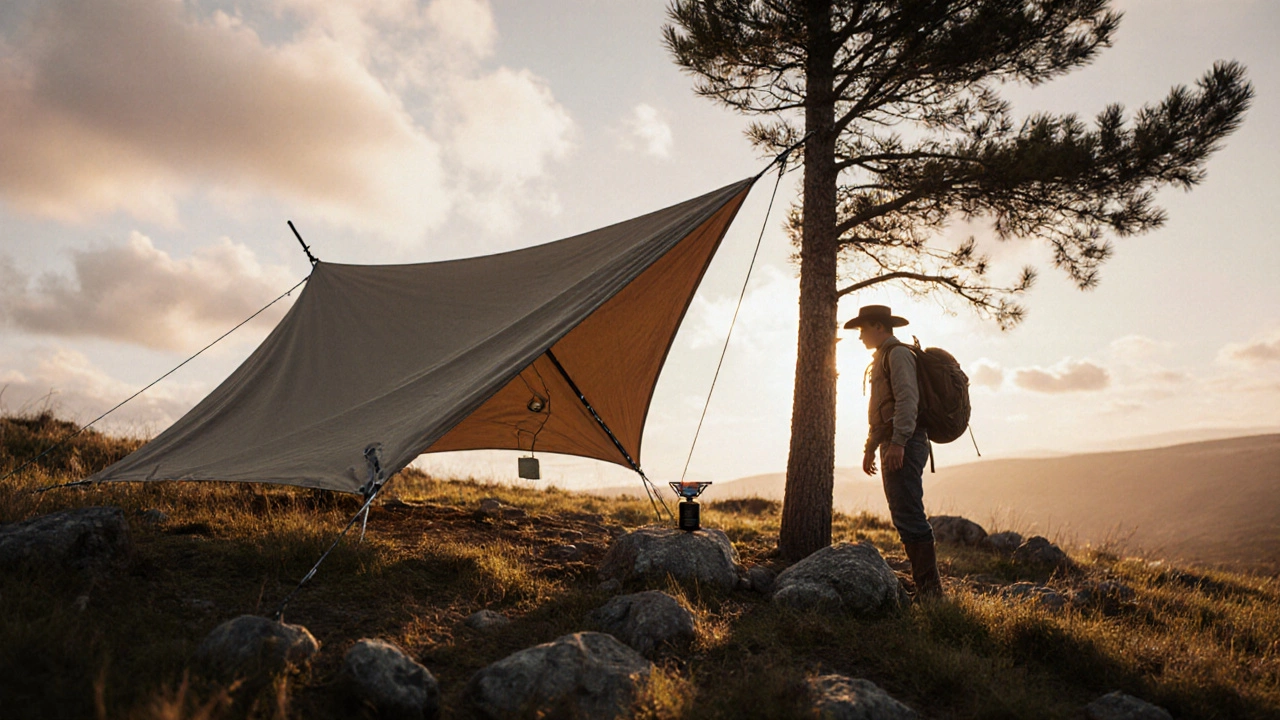
What Is Cowboy Camping? A Complete Guide to Off‑Grid Outdoor Adventures
Discover what cowboy camping really is, the gear you need, how to set up a tarp, safety tips, legal aspects, and a beginner-friendly guide for off‑grid adventures.
Read MoreWhen planning a night around the blaze, Campfire Safety, the practice of building, maintaining, and extinguishing campfires without harming people, property, or the environment, should be your first checkpoint. Also known as fire camp safety, it covers everything from choosing the right spot to using proper tools. Mastering this skill means you can enjoy a warm glow while staying compliant with local Campsite Rules, the set of guidelines that govern behavior, waste, and fire use at a campground.
Good Fire Safety, a broader concept that includes smoke management, fire extinguishers, and emergency response plans, underpins every campfire decision. Whether you’re pitching a tent in a family site or a remote wild‑camping spot, the same principles apply: clear a safe perimeter, keep water or a sand bucket nearby, and never leave the flame unattended. For motorhome travelers, Motorhome Safety, the set of precautions for operating and living in a motorhome, including fire precautions and proper ventilation, adds another layer—make sure your RV’s fire extinguisher is within reach and that the stove’s shut‑off valve works.
Campfire safety starts with location. Pick a designated fire pit if the site provides one; if not, choose a spot at least 15 feet away from tents, trees, and any flammable material. Clear the ground of leaves, twigs, and pine needles, then lay a bed of sand or a metal fire ring. This simple step reduces the risk of a ground fire spreading, a common cause of campground incidents.
Next, gather the right fuel. Use dry, seasoned wood and avoid green branches, which spit sparks. Small kindling gets the fire going, then add larger logs gradually. Never use accelerants like gasoline—they explode, and most campsites forbid them under their fire safety rules.
Control is crucial. Keep the flame low and manageable; a tall fire is harder to put out and throws more embers. Always have a water source, sand bucket, or fire extinguisher ready. If the wind picks up, let the fire die down safely before adding more wood.
When it’s time to go, extinguish the fire thoroughly. Sprinkle water over the embers, stir the ash, and repeat until the hissing stops and the area feels cool to the touch. This three‑step “wet‑stir‑wet” method satisfies most campsite fire regulations and prevents hidden hotspots.
If you’re out in the wild, check local bylaws before lighting a fire. Some forests require a permit, especially during dry seasons. Follow the “Leave No Trace” principle: pack out any leftover wood, avoid damaging the soil, and respect wildlife habitats. These actions align with both fire safety and the broader ethos of responsible wild camping.
For motorhome users, never use an open flame inside the vehicle. Cooking should be done on external grills or built‑in appliances with proper ventilation. Store flammable liquids—like propane or gasoline—outside the cab and secure them in approved containers. Regularly inspect your RV’s smoke detectors and replace batteries annually.
Finally, educate your group. A quick safety briefing before sunset can prevent accidents. Explain the fire plan, assign a “fire watcher” to keep an eye on the flames, and make sure everyone knows how to use the extinguisher. Clear communication turns a casual night into a coordinated safety effort.
All these points—site selection, fuel choice, fire control, proper extinguishing, legal awareness, and group coordination—form a network of practices that keep campfires enjoyable and safe. Below you’ll find articles that dive deeper into each area, from detailed campsite rule breakdowns to solo camping safety checklists, ensuring you have the knowledge to fire up responsibly wherever you roam.

Discover what cowboy camping really is, the gear you need, how to set up a tarp, safety tips, legal aspects, and a beginner-friendly guide for off‑grid adventures.
Read More